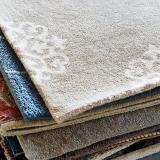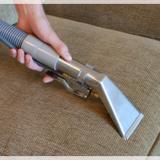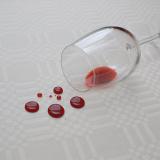Our Blog
Please feel free to post a question or just join the conversation.
Jute is a popular natural fiber used in rugs, but it comes with major cleaning risks. Learn how jute is used, why it stains easily, and expert advice from Alec’s Carpet & Upholstery Cleaning.The Uses of Jute in Rugs – Beauty with Big Risks
Jute is a material many people have heard of but may not fully understand. While it adds unique texture and beauty to rugs, it also comes with some significant drawbacks. Before investing in a rug that contains jute, it’s important to know both the benefits and the problems it can cause.
What Is Jute?
Jute is a long, soft, shiny vegetable fiber that can be spun into coarse, durable threads. It comes from plants and is one of the most affordable natural fibers, second only to cotton in worldwide production.
Jute fibers are made primarily of cellulose and lignin, which gives them strength. Beyond rugs, jute has many uses, including:
Burlap and hessian cloth
Rope and twine
Matting and sacks
How Jute Is Used in Rugs
Jute shows up in rugs in a couple of common ways:
As rug backing – Jute may be used as a primary backing (tufting surface) or as a secondary backing for added strength.
As a blend with other fibers – Sometimes jute is combined with wool or other fibers as part of the rug face yarn.
The Problems with Jute in Rugs
While jute has many uses, it has one major weakness: it doesn’t get along with moisture.
Highly absorbent: Because it’s a cellulose fiber, jute soaks up liquid quickly.
Bleeding and discoloration: When wet, the natural color and lignin in jute bleed. This causes staining in surrounding fibers or creates a dark ring around the spill. The center of the spill may also lighten in color as pigments migrate outward.
Difficult to clean: Rugs with jute can’t be cleaned with traditional wet-cleaning methods. Unfortunately, wet cleaning is the most effective way to remove soil and stains. Dry cleaning methods don’t clean effectively and may even void rug warranties, especially when wool or latex backing is involved.
Backing issues: When jute is used in the backing, spills or excess moisture can cause lignin to wick up into the surface fibers, leaving visible brown or yellow stains—especially on wool rugs.
The Practical Truth About Jute Rugs
After more than 55 years in the carpet and rug cleaning business, I’ve seen countless cases where jute caused permanent damage from spills, pet accidents, or even attempts at cleaning. Without jute, many of those stains would never have been an issue.
While I appreciate the visual texture and natural appeal that jute can bring to a rug, from a practical standpoint, my advice is clear: avoid jute whenever possible. It looks great—but it’s not worth the risk.
[caption id="attachment_2747" align="alignnone" width="459"]Jute adds beautiful texture to rugs but can cause serious staining and cleaning challenges when exposed to moisture.[/caption]
note_stackRelated Posts
- Custom Rugs with Multiple Pile Heights | Pros, Cons & Care Tips - About Rugs Apr 24
- What Causes Wrinkles in Area Rugs | Easy Fixes & Professional Advice - About Rugs Jan 16
- What You Should Know Before Buying an Area Rug - About Rugs Mar 15
- Wool Carpet Cleaning: Safe Methods for Natural Fiber Rugs - About Rugs Mar 31
Blog Categories
-
Carpet & Upholstery Cleaning (15)
-
 Carpet Cleaning (15)
Carpet Cleaning (15)
-
 Spot Cleaning (14)
Spot Cleaning (14)
-
Uncategorized (5)
-
 About Rugs (5)
About Rugs (5)
-
 Upholstery Cleaning (5)
Upholstery Cleaning (5)
-
 About Carpets (3)
About Carpets (3)
-
Outdoor Cushion Cleaning (2)
-
 Fabric Protection (2)
Fabric Protection (2)
-
 Leather Upholstery (2)
Leather Upholstery (2)
-
 Fabrics (1)
Fabrics (1)
-
 Stains on Carpets (1)
Stains on Carpets (1)
-
 Discussions on Carpet & Upholstery (1)
Discussions on Carpet & Upholstery (1)
-
 News (1)
News (1)
